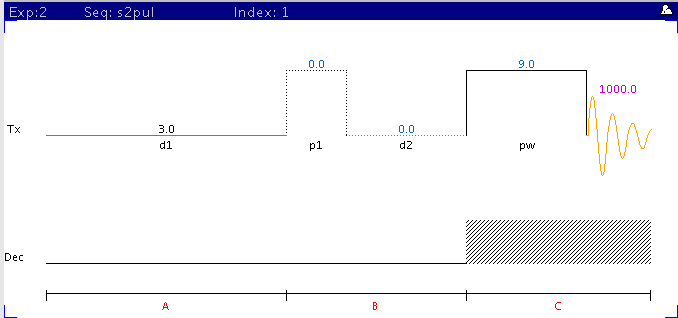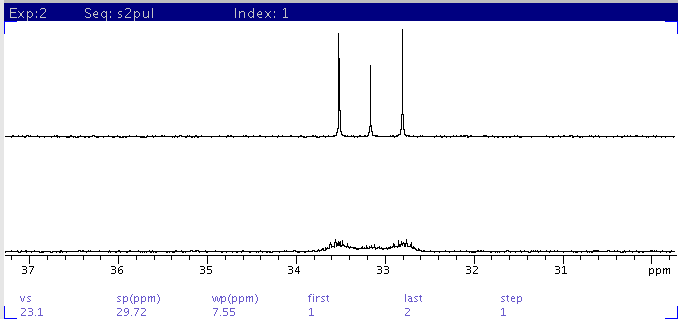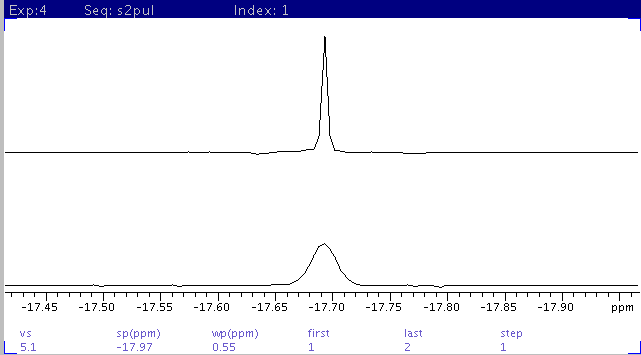
P31 is a senstive nucleus to detect. At natural abundance (~100%), P31 has a relative sensitivity of 6.7% of that of H1 compared to 0.017% for C13. For P31-containing compounds, 1D P31 spectra can be collected with or without H1 decoupling. By comparing the two spectra, H1 coupled P31 peaks can be identified. H1 decoupling can be done either with a broadband decoupling scheme (to cover multiple H1 peaks) or with a weak power to decouple one or a group of H1 peaks at a time. For high-resolution P31 spectrum when the acquisition (and decoupling) time is long (>1 sec), selective H1 decoupling with weak power is preferred in order to minimize probe and sample heating.
P31's has a wide chemical shift range (roughly +/-200 ppm). For P31 chemical shift tables, refer to the following online pages:

Step 1: Lock and shim
Step 3: Load parameters and tune X-channel for P31
Step 4: Set and submit experiment
Step 5: Processing
Step 6: Finishing up: tune probe X-channel to C13 and recable
Sample #1:
|

Bottom: H1-coupled P31 spectrum
Top: H1-decoupled P31 spectrum
|
Sample #2:
|

Bottom: H1-coupled P31 spectrum Top: H1-decouped P31 spectrum |
H. Zhou updated Dec 2010